B2B prospecting results by department and seniority

What effect does your potential prospect’s position in a company have on your chances of success in securing that critical first meeting? And, how freely do different departments flow into your sales funnel?
As part of our Sopro Insight series we’ve looked at 100,000 prospecting emails that have been sent by our good selves on behalf of a number of clients to a wide range of different industries over the past quarter.
They all have the same goal, namely, to introduce a company and its services to a potential prospect and invite a follow-up call or meeting.
Yet, their results in achieving qualified leads vary radically according to who they were sent to and where this person sits within their company.
Let’s break down the results of our analysis and see what we can learn.
A little housekeeping
Before we dive in, just a little housekeeping.
A lead is here defined as one of three things:
- A positive response to the invitation (usually as an arranged phone call or meeting)
- A referral to another prospect (usually within the business)
- An expression of deferred interest
We’ve already explored the effects of prospecting by sector, prospecting by gender and prospecting by company size, amongst other factors – so, if you’ve been sleeping now’s your chance to catch up on some of the insights already shared.
Prospecting by job function and seniority
We divided our prospects into five functions:
- Owner (this includes founders and senior shareholders)
- CXO (this includes COO, CTO, CEO, CIO, Chief of staff, partners, VPs etc)
- Director
- Head of Department
- Manager
With an average Lead Rate for our data set of 3.91%, and an average Positive Response Rate of 1.69%, we wanted to see exactly how each level of seniority may vary the outcomes.
Here’s what we discovered.
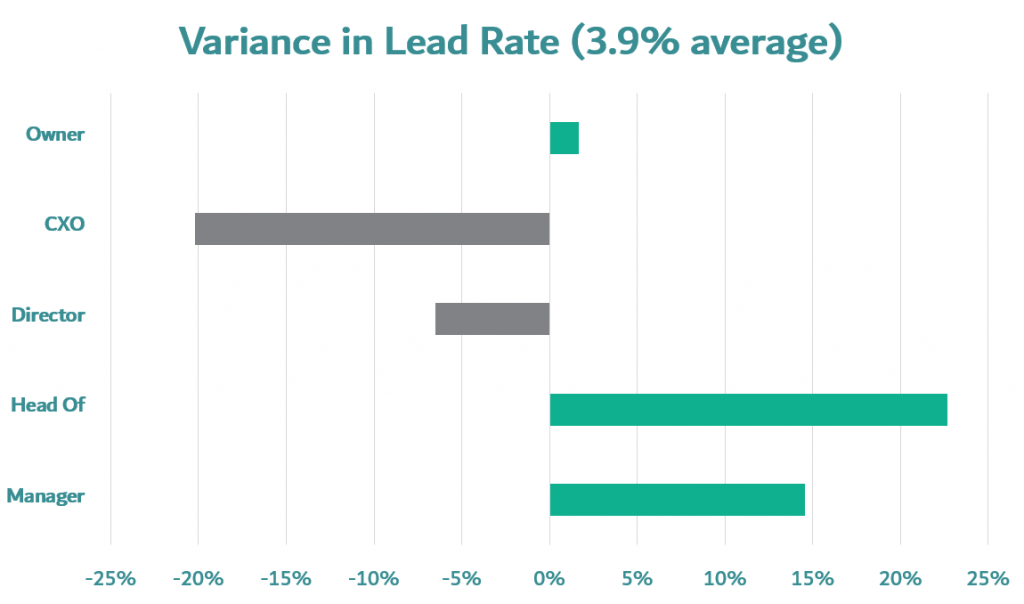
The overall Lead Rate contains positive responses, deferred interest and referrals.
- It is markedly lower for CXOs and Directors – down 20% and 7% respectively.
- Further down the pecking order the Lead Rate significantly rises for Heads of Department (up 23%) and Managers (up 15%).
The overall picture suggests that with less seniority the chances of prospecting success are greater.
Let’s just compare this to the Positive Response Rate, which just considers an unambiguous invitation to meet.
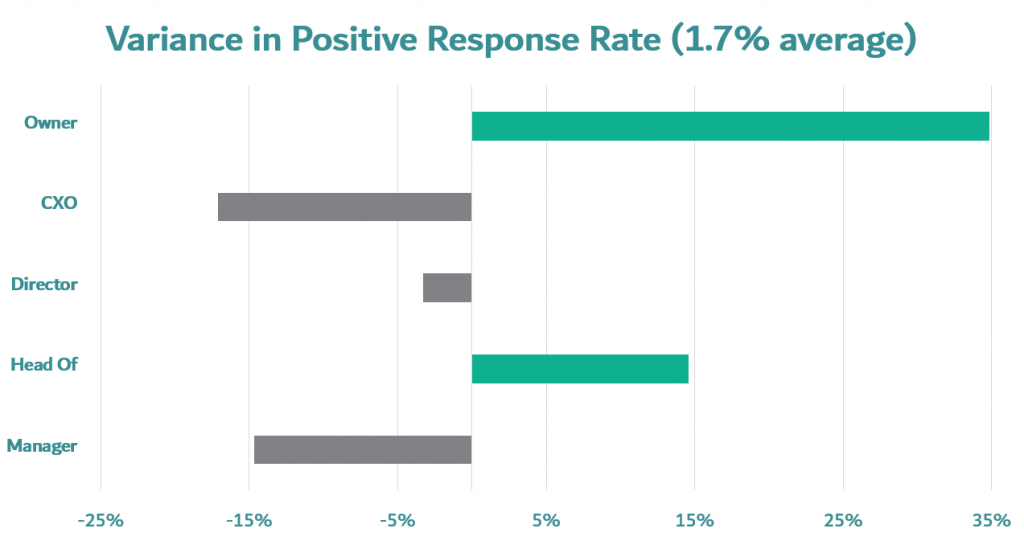
Interestingly, the best chance of getting a firm, unqualified invitation comes from an approach to an Owner.
Heads of Department also seem to be a decisive lot – with nearly 15% more than the average Positive Response Rate.
A certain degree of caution is required in interpreting this data.
In previous Sopro Insight posts, we’ve looked at how the size of a company can greatly skew prospecting success.
We merged company size data with our job function analysis to see what it may reveal. The next part is pretty data-ry, so grab yourself a cuppa or something stronger if it’s nearing the witching hour…
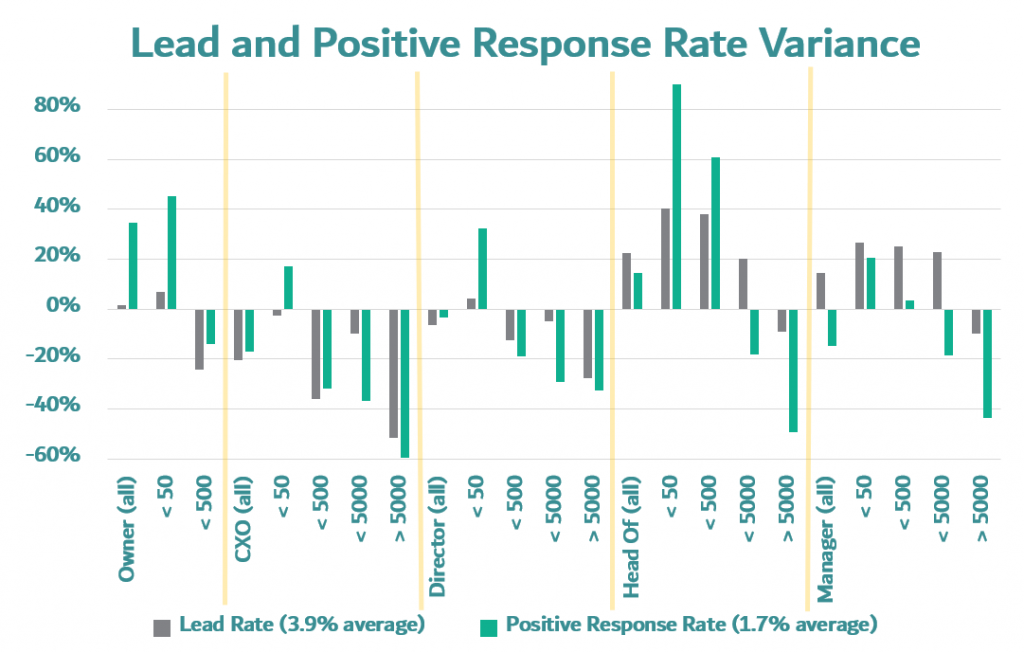
The overall average for each level of seniority is listed first, followed by company size (by number of employees).
Company size has been divided into:
- Less than 50
- 51 – 500
- 501 – 5,000
- 5,001 +
(Any data where the sample size is too small to be statistically relevant is not included.)
What we can see is that the Positive Response Rate of prospecting for owners is much more an effect of company size than position. There is a sharp drop off in companies above 50 employees.
A similar effect can be seen with CXO’s and Directors – with good lead rates and positive responses in smaller companies but a sharp decrease in those with 51 or more employees.
For Heads of Department, however, there is a good rate for leads in companies up to 5,000 employees; (although positive responses drop off from the larger companies). In fact, the sweet spot in the prospecting mix here is with Heads of Department in companies with less than 500 employees. These offer, by far, the best chance of success.
Prospecting by Department
As well as looking at the prospect’s position within the company we wanted to investigate what effect the department you are pitching to can make.
We analysed this, initially, without looking at who the pitch was made to, focusing just on the department it addressed..
Discounting departments where numbers were low enough to be considered statistically unreliable, we focused on:
- Marketing
- Operations
- Sales
- HR
- IT
- Legal/Compliance
- Finance
Here are the scores on the doors:
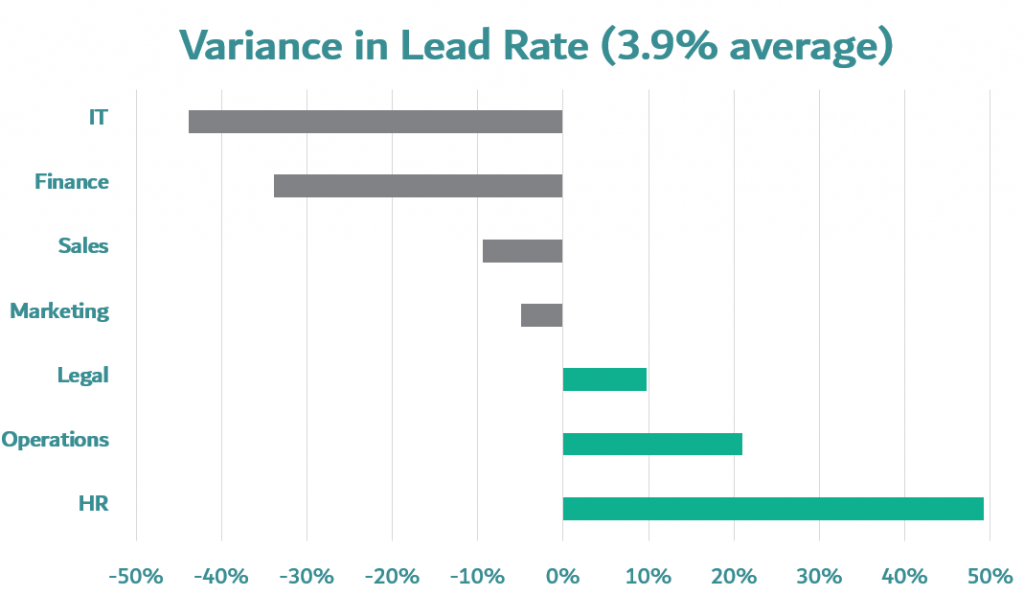
This may well be a reflection of the number of introductory emails these departments receive. Interestingly the three departments registering a Lead Rate higher than the norm are all, in different ways, operational – whether considered with legal compliance, resourcing and talent or the efficient running of the company. With massive variances in Lead Rates – from IT’s 2.02% to HR’s 5.37% – it’s clear that some departments are much more receptive to consider approaches than others.
Looking at how many of these leads were proportionately positive responses is, in some ways, an indication of how committed the response was.
This is what happens when you place the variance in positive leads (against the average) next to that for all types of leads:
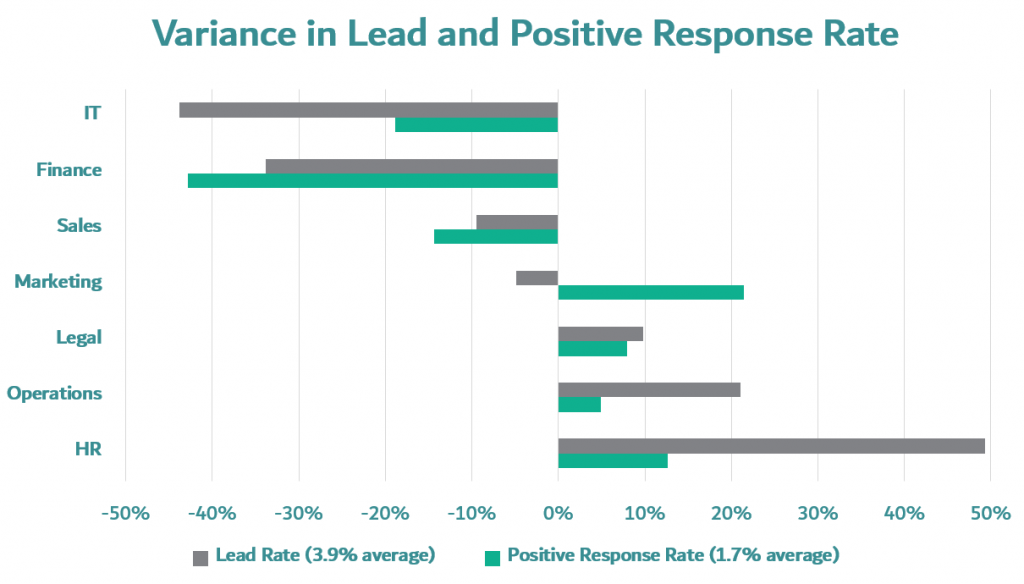
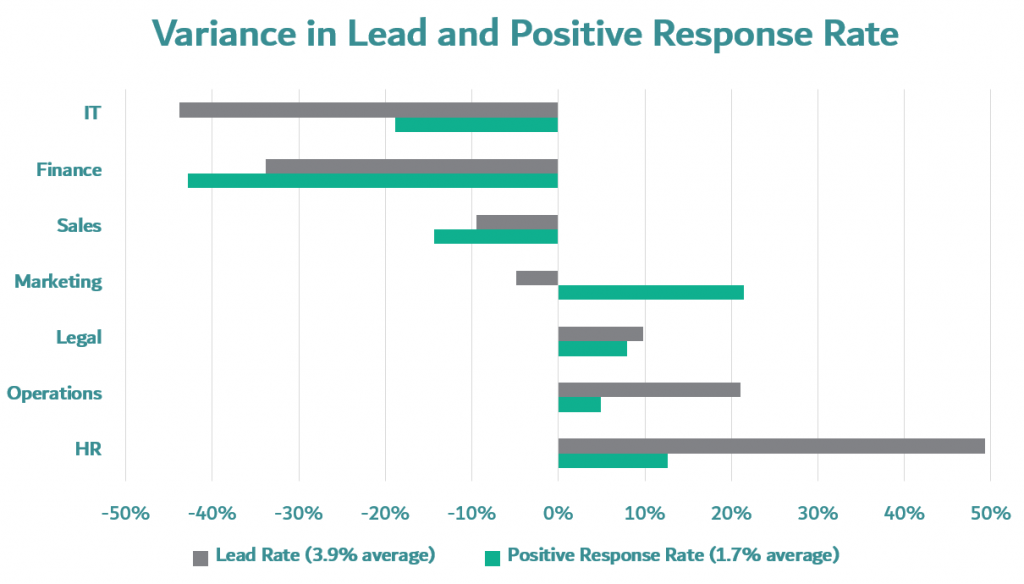
The effect of seniority by department
The IT department suddenly doesn’t seem as unsociable as it first looked. At the other end of the spectrum the HR department are a polite lot, happy to refer to the right person to speak with, but not quiet as keen to talk as it first looked. The marketing department was probably the stand-out finding with the overall Lead Rate under the average, but the most likely to commit to a call or meeting straight away.
Our departmental analysis above does not take into account whether there are also variances created by job function in relation to department – it is this that we’ll take a look at next.
Not all departments or levels of seniority are covered here, simply because, the further into this data you drill, some areas no longer yield enough results to be representative.
Here are the departments that we looked at, starting with HR.
HR
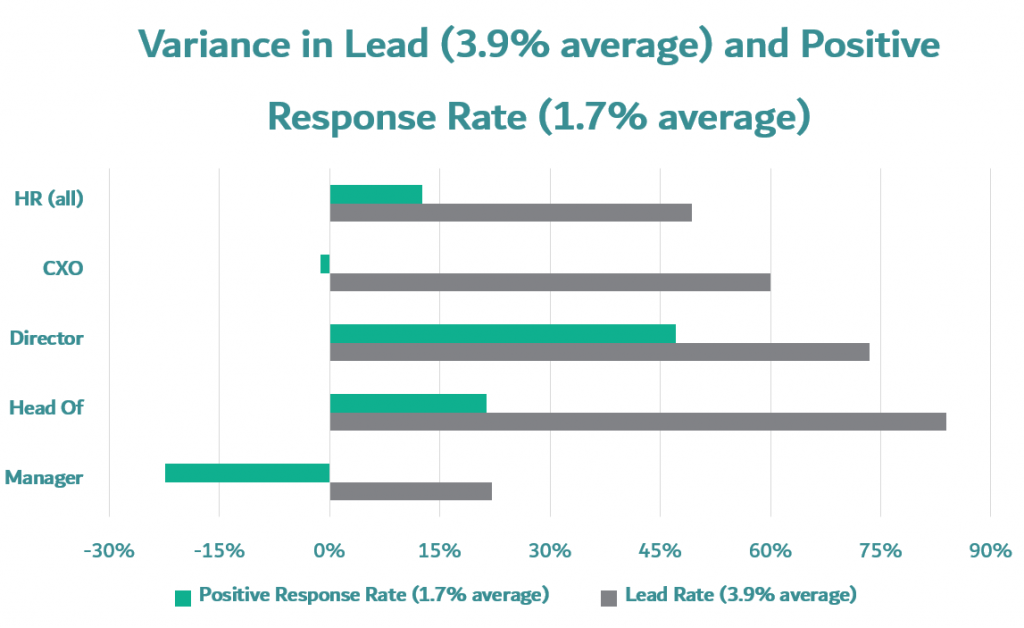
At Manager level there are few firm responses and a significant drop-off in leads. The most responsive levels to prospect at within HR are Head of Department (more leads) and Director (offering more positive responses and a similar level of leads).
IT
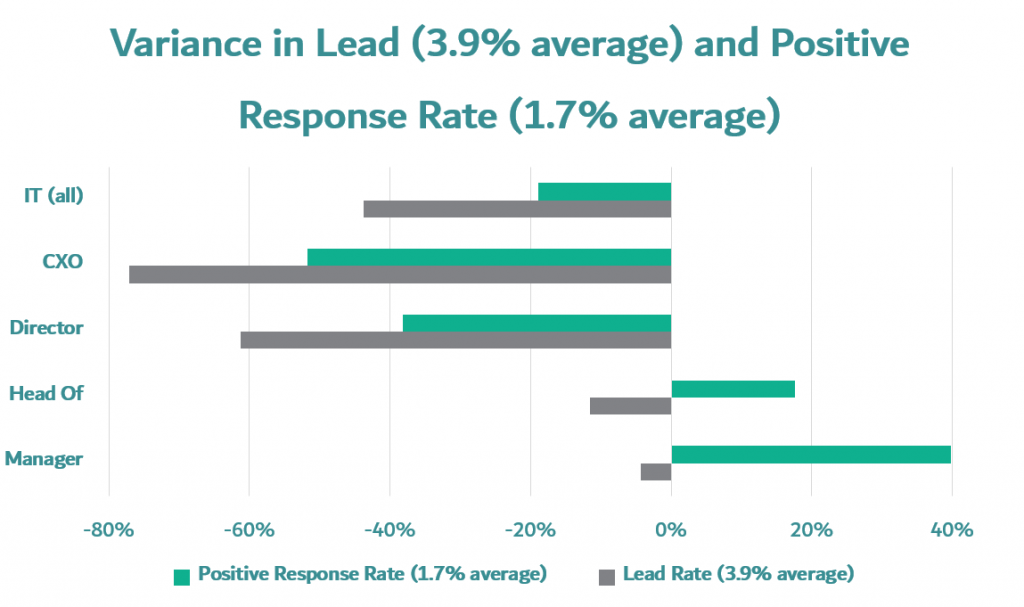
Heads of Department and Managers tend to be much closer to the prospecting norm –and it is the least senior role (Manager) that is most likely to offer an unqualified positive response. The least responsive level within IT is CXO, although IT Directors are pretty hard to prospect too.
Marketing

Its CXO’s are ready to consider new services and suppliers, and ready to do so immediately without a referral or a delay. It’s the Heads of Department, however, who offer the best-prospecting gold, with a positive response rate almost 40% above the average. As a department marketing tends to cluster closer to the expected in terms of lead and positive response rate.
Operations
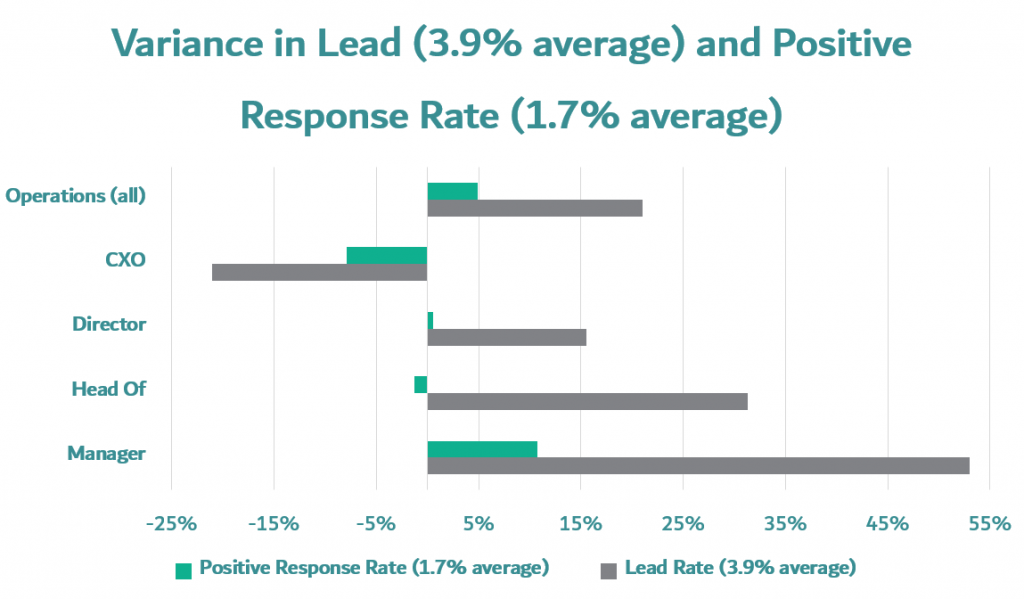
It’s at the Managerial level where those prospecting within the Operations department are having the most joy. Not only is its Lead Rate over 40% the average, it also sees the best Positive Response Rate for this section of the company.
Sales
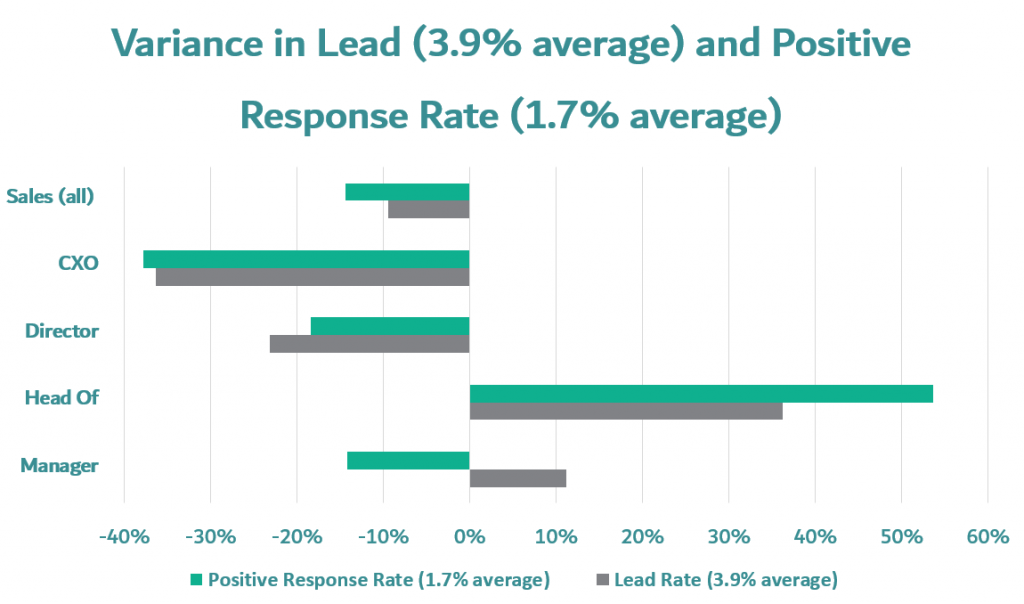
It’s at the Head of Department level that the doors truly open for sales, in terms of positive responses and leads. Sales is a tough department to crack in general, but especially so at CXO and Director level.
Prospecting variables
The job roles and departments that you target can radically alter your prospecting success.
Yet, it’s what, when and how you make that introduction that really tips the scales.
With so many variables affecting the outcome of prospecting the only thing you can say for sure is the more you do it, the better you get.
And, we do this day in and day out.




Share